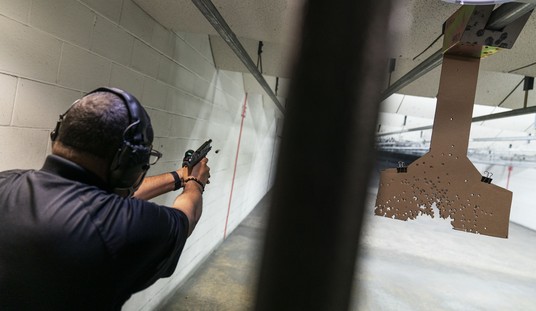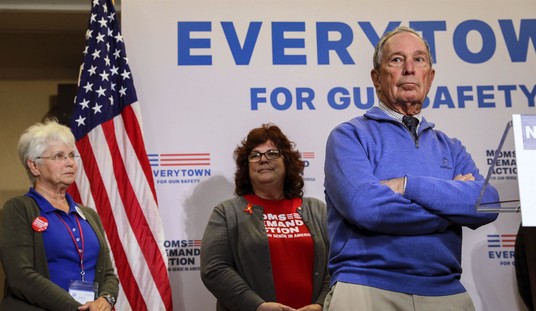There are numerous perks to being editor of Bearing Arms. I’m often among the first to hear about and sample new products. I get to speak directly with manufacturers of firearms, gear, and ammunition. But despite the access to things, my favorite perks all involve education.
I’ve been blessed to take hundreds of hours of training classes from some of the best firearms and non-ballistic weapons instructors in the world. I’ve had a chance to hear their first-hand accounts both in class and over dinner or drinks, and get a glimpse into the mindset of some of federal agents, SWAT cops, Navy SEALs, Special Forces veterans, MARSOC Marines, civilian instructors, and world-class professional sport shooters.
After hundreds of hours in classrooms, scenarios, simulators, shoot-houses, on the square range, and talking with trainers on the phone, over dinner, in texts, and in emails, I’m finally just starting to get a grasp of how much I don’t know.
On the Burch Hierarchy of Competence I’m somewhere on the range of “unconscious incompetence” (I don’t even have a basic understanding of what I don’t know) to “conscious competence” (I can do the right things, but only through concerted effort).

I try to push myself and take classes that challenge my weaknesses (there are many), and so I spend most of my time in the lower two tiers of the pyramid, trying to build up to conscious competence. If I ever feel like I’m getting close to unconscious competence (I can do this stuff with my eyes closed and can’t get it wrong), then that sends up a huge warning flare in my mind that Bob, you are missing something.
Then I usually “die.”
As the late, great Pat Rogers said, “Learning occurs only after repetitive demoralizing failures,” and so I endeavour to fail on a higher level each and every time, and keep an open mind to the many ways I could possibly do things better.

Fortunately, good instructors also tend to be supportive instructors, and so while I still make mistakes or could do things more efficiently, they also tend point out how much progress you’ve made. It’s been enlightening.
Three years ago, I thought I was a decently trained shooter.
After all, I grew up around guns. I’ve been hunting since my early teens, had the basics of gun safety down, had a concealed carry permit, and had done well in both the NRA’s Basic Personal Protection In The Home and Basic Personal Protection Outside the Home classes. I’d thought about how I’d react to certain threats, and figured I had things covered.
My wakeup call came as a journalist covering one of the first NRA Defensive Pistol classes ever taught. John Boyette of Trace Armory Group was the lead instructor, and his implementation of the then-new curriculum was the first time I’d been immersed in force-on-force training, and it was an eye-opening experience.
I recall watching people who were much better shooters and gun handlers than I on the square range start going to pieces and not even be able to clear their cover garment, much less draw a gun, before a rubber knife was plunged into their chests or a nerf bat was upside their heads. It was a reality-challenging, ego-crushing wake-up call that the few rudimentary classes I’d taken to that point were simply a starting point.
Hundreds of hours of formal training later, with certificates from BixPros, Citizens’ Defense Research, Gunsite Academy, NSSF Fantasy Camp, Sentinel Concepts, and Valor Ridge, I’m now a bit more confident in my actual ability to defend myself, but I also understand that learning self-defense is a journey without an end, and I have a very long way yet to travel.
* * *
It’s because of what I have learned—which is much more than most, while still being much less than what I want to learn—that I get annoyed when clueless general interest reporters ask equally clueless citizens about their opinions about any current event involving a concealed carrier, homeowner, or law enforcement officer.
Take for example this story out of Indio, California, where a police officer shot and killed a 71-year-old man who was advancing upon him with a knife, and the reporter felt compelled to include a couple of “man on the street” interviews with people who just happened to be in the area the following day.
A deadly encounter with police caught on cell phone video appears to show a 71-year-old man being shot seven times by a police officer.
Mikayla Mendoza recorded the video of the officer-involved shooting Saturday night.
The man in the video apparently threatened people with a knife. Then, seven shots rang out outside the Rancho Fresca Market.
Daniel Flores, a visitor who was shown the video, said the man didn’t need to die.
“I’m sure the officers are scared for their lives and whatnot, but still, if they have tasers and can still get at a distance and tase him, then I don’t think it’s right for that person, even though he was out threatening people,” Flores said.
Others who saw the video said it was hard to tell the whole story from such a short clip.
“I mean, I know they’re taught shoot to kill,” said Marissa Reinhagen of Palm Desert, CA. “My father was in the military. I know that is usually what you’re supposed to do. You know, seven times. I don’t know if that was necessary or not. If he felt threatened, then yeah. If it was just a knife, maybe not.”

Daniel Flores seems like he’s probably a nice guy, but why should I, or you, or anyone else care at all about what he thinks about this shooting? He’s clearly in the realm of “unconscious incompetence.” He clearly has no grasp of use-of-force guidelines, and certainly doesn’t understand that tasers are not used against an armed person when an officer is alone, because they fail to work with stunning regularity. Tasers are only an option if the officer has armed backup, typically in the form of at least two other officers. Nor does Mr. Flores grasp that officers are generally trained to shoot until the rounds have an effect on target of making the threat go away. That can be a single shot miss that startles the suspect into dropping his weapon and complying, or it could involve an officer (or officers) emptying their guns numerous times if they can’t get effective hits, or if they face an extremely determined adversary who refuses to go down even after taking a hit that will certainly prove to be fatal in 30 seconds to several minutes.

The same goes for the other person interviewed, Marissa Reinhagen. Ms. Reinhagen is probably a very nice person, but what does she really have to say that is remotely relevant? I appreciate that her father served in the U.S. Army, but she didn’t learn anything from his experience.
Why do reporters feel compelled to ask the general public about use-of-force issues that even professionals sometimes disagree on, when the average reporter, citizen, and activist is no more competent to talk about that decision than they are to critique a firefighter’s decision to use an certain tool for a vehicle extraction?
This is Peggy Liftmeup from Eyewitness News. We asked Bill Monroe what he thought about the Mayberry Fire Department’s decision to stabilize Cindy Chandler’s totaled Chevy Malibu before attempting to remove her from the vehicle.
“Well, they decided to use an Autostrut to prevent the C-pillar from collapsing any further before employing an RC-5 Guillotine cutter, but I just don’t see why they didn’t use a TVS kit and a Hydra-Ram instead. I think that was unnecessary and dangerous, and the firefighter who made that decision should go to jail.”
“You have a lot of experience with high risk vehicular extractions, Mr. Monroe?”
“No, but I have a fire extinguisher at home, and I fell off my bike once.”
“Thank you for your insight, Mr. Monroe. Back to you in the studio, Jim.”
* * *
We have news media, politicians, gun control cultists and pro-criminal “peace” activists all pushing for a “national conversation” on the use of force by concealed carriers, homeowners, and law enforcement officers. I’m not aware of even a single one of these blowhards having the first bit of professional training that would equip them to intelligently discuss the merits of a taser over a baton over a chemical spray over a firearm in a given situation, much less qualify them to pass laws and policies determining their use.
But as insane as it may be, people are listening to these people, simply because they’re emphatic in their ignorance.
The movie “Idiocracy” was supposed to be a comedy, not a documentary, and not a guide for governing and policy making.
Until we stop accepting the foolish notion that uneducated opinions matter more than the experiences and educations of experts, we’re going to see things just keep getting worse, not better.








Join the conversation as a VIP Member